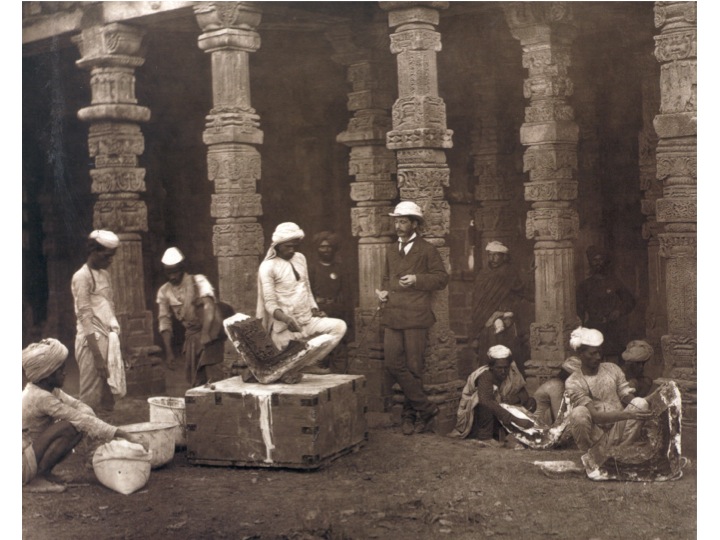"Between Affect and Archive: The Struggle to Represent the Quwwat-ul-Islam Mosque"
Mrinalini Rajagopalan, Assistant Professor, History of Art and Architecture
Constellation: Environment

On 15th November 2000 a small, angry mob gathered outside the compound of the Quwwat-ul-Islam mosque in Delhi, India. The protestors, representing right-wing Hindu nationalist parties, demanded access to the mosque to hold a religious ceremony that would “liberate” the Hindu idols used by the original Muslim builders of the mosque in its construction. Started in the 12th century by the earliest Muslim rulers of the subcontinent and continually added to by successive Islamic empires well until the 17th century, the Quwwat-ul-Islam mosque and its larger complex of minarets, tombs, and colleges, is made up almost entirely of spolia from Hindu temples. The attempted Hindu reclamation of this monument in 2000, however, is less related to its pre-modern history, and more to the continuous publicity it has received as part of various preservation projects starting in the late 19th century. As part of an aggressive movement of preservation launched by the British colonial government, the Quwwat-ul-Islam entered a larger global imaginary as its Hindu as well as Islamic architectural elements were separately reproduced and exhibited at various locales such as the South Kensington Museum in London (in 1872) and the 1924 British Empire Exhibition. After India received independence in 1947, the Quwwat-ul-Islam continued to be celebrated as a part of secular India’s heritage and in 1992 it was listed by UNESCO as a World Heritage Monument. Even as the monument continues to receive thousands of domestic and foreign visitors it has become increasingly embroiled in the politics of multiple appropriations: by Muslim residents of Delhi who have recently resumed its confessional program as a mosque; by radical Hindu nationalists who wish to reclaim it as a historical site of Islamic iconoclasm; and by the national and international bureaucracies of preservation who insist on its value as Hindu and Islamic architectural heritage.
In this presentation I argue that the colonial and postcolonial preservation of the Quwwat-ul-Islam has tried to fix the representation of the monument within an archive of meaning. I apply Derrida’s notion of the archive as a set of legal and juridical orders that are managed and guarded by archons (embodied personalities who are the stewards of the archive) to the bureaucracy of preservation. I also argue, however, that this assumedly stable archive is persistently interrupted and threatened by various forms of affect, such as the popular and less than expected appropriations by Muslim as well as Hindu groups of the Quwwat-ul-Islam as sites of traumatic memory or religious function. Here I employ cultural theorist Sara Ahmed’s conceptualization of affect as an economy of sentiments that creates a “stickiness” of emotionally charged meanings around particular bodies. By doing so I trace a post-19th century history of the Quwwat-ul-Islam mosque as a monument defined by its modern and multiple crises of representations.
